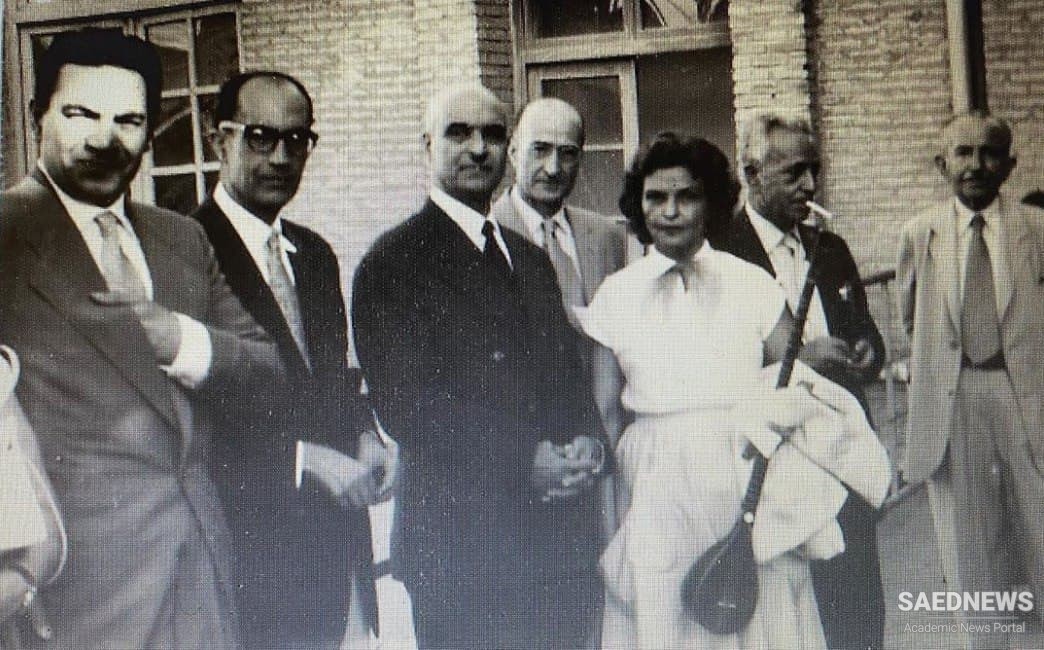The government did its utmost to expand the radio network in Iran. “Agreement was reached on the preparation of a list of electrified towns, and the relevant municipalities were assigned to purchase and install radio receivers in the public squares of such towns at their own expense”. Similar to the gramophone record, radio was used by the government as a means of propagating pro-government ideas. Considering the hymns performed at the inauguration ceremony of the radio and the instrumental use of music on air, propaganda purposes become evident: “Hymns like Praise of the Shah, Love of the Shah, and Endeavour were performed live on this occasion, hymns that were emphasizing nationalism and the shah’s leading role.”
As a whole, the government did not adopt consistent policies on music during the reign of Reza Shah. Based on a review of the shaping of governmental institutions dealing with music during this period, Reza Shah’s policies on music can be divided into two sub-periods:
1 ‘Alinaqi Vaziri’s term in office from 1928 until 1935; 2 Gholamhoseyn Minbashiyan’s term in office from 1935 until the end of Reza Shah’s reign. As explained above, ‘Alinaqi Vaziri was seeking to provide a new definition of Iranian music from the viewpoint of European classical music. Indeed, he was trying to render Iranian music compatible with European classical music through its harmonization, however, without altering the principle of Iranian music. But Gholamhoseyn Minbashiyan stood basically for the omission of Iranian music and the spread of European classical music. It does not seem logical to attribute the abovementioned major changes in the mentality of the administration of Iranian music only to ‘Alinaqi Vaziri’s non-compliance with the performance of a concert at the court.
Rather, it seems, this was rooted in key changes that had occurred in the government’s cultural policies at that historic juncture. ‘Alinaqi Vaziri’s period of office managing the nation’s music is concurrent with the premiership of Mehdiqoli Hedayat. As mentioned previously, Hedayat was thoroughly familiar with Iranian music and had created a number of works in this context. Contrary to most individuals from the ruling oligarchy, such as Teymurtash and Hasan Taqizadeh, he did not have a purely pro-Western standpoint.
Whereas Mehdiqoli Hedayat had passed several years of his life as an adolescent and youngster in Germany, he was familiar with Western culture, partially liked it and criticized certain aspect of it. It seems he was the only intellectual with such an approach among the political elite of the age of Reza Shah. His approach towards the West was thoroughly independent, selective, and critical.
He believed in reforming the society’s religious affairs and traditions, but had no intention of eradicating them. The idea of removing the women’s veil began to spread through certain individuals from the political elite during his tenure in office, but it was not put into action during this period. Right from the beginning, Hedayat expressed his outspoken opposition to the unveiling movement, but made certain proposals for the modification of the women’s veil in order to promote their greater participation in society at large. As to his proposed plan, he made the following remarks to Reza Shah: “My intention of the program presented to His Majesty was that instead of the chador, an outer garment or manteau in a befitting style be used so that the women’s full body can be covered except their face.” As a whole, Mehdiqoli Hedayat was keen to reconcile social modernization with tradition. Under such conditions and while believing in Iranian music, ‘Alinaqi Vaziri, who sought to introduce reforms in Iranian music from a Westward-looking standpoint, succeeded in attracting the attention of Mehdiqoli Hedayat.
Step by step, a group of individuals from the political elite with a greater inclination towards the Westernization of Iranian society moved closer to Reza Shah, a measure that led to the dismissal of Hedayat. Hedayat’s main defect, i.e., his dislike of modernity and Iran’s submission to Europe’s superficial culture, was finally made public at a time when the shah had decided to put into effect his plans for women’s liberation: A prime minister who did not shave his beard, did not take his wife anywhere unveiled … was not bearable.
After Mehdiqoli Hedayat’s dismissal, Mohammad ‘Ali Forughi was re-appointed as prime minister. Forughi and his colleagues were seeking to fulfil the modernist and pro-Western attitudes of the intellectuals of the Constitutional Revolution– era with the aid of Reza Shah. With the premiership of Forughi noticeable changes in cultural policies began. These were based on the adoption of a much stricter attitude towards religious traditions and a drive towards an ever-faster Westernization of Iranian society. This cultural attitude, despite Forughi’s short-lived cabinet, was the dominant attitude until the end of Reza Shah’s reign, so that upon Forughi’s dismissal in 1936, the unveiling was put into effect through the agency of a great number of politicians including the then minister of culture, ‘Ali Asghar Hekmat.
This radical attitude towards the Westernization of Iranian society left its impression on all cultural aspects, including music. Under such conditions, Gholamhoseyn Minbashiyan’s thoughts seemed to be more compatible with the dominant cultural policies than those of ‘Alinaqi Vaziri. This correspondence can be seen clearly in the Ministry of Culture’s communiqué to Minbashiyan regarding the State Department for Music. As stated above, the reason given in Reza Shah’s order for the formation of this department was to introduce changes in the music of Iran and base it on the foundations of Western music.


 ABU HANIFA , Numan b. Sabit (80–150/699–767)
ABU HANIFA , Numan b. Sabit (80–150/699–767)














































